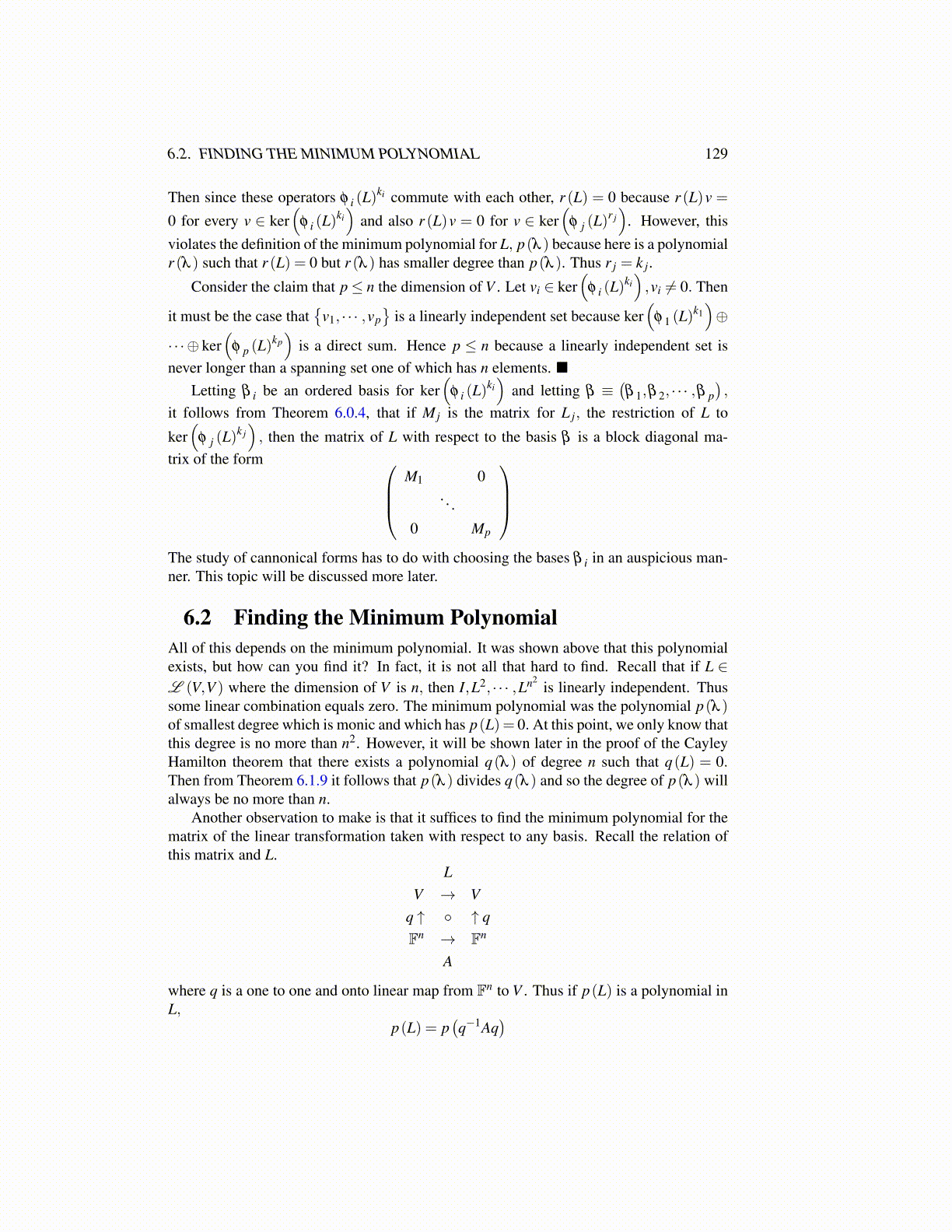
6.2. FINDING THE MINIMUM POLYNOMIAL 129
Then since these operators φ i (L)ki commute with each other, r (L) = 0 because r (L)v =
0 for every v ∈ ker(
φ i (L)ki)
and also r (L)v = 0 for v ∈ ker(
φ j (L)r j)
. However, thisviolates the definition of the minimum polynomial for L, p(λ ) because here is a polynomialr (λ ) such that r (L) = 0 but r (λ ) has smaller degree than p(λ ). Thus r j = k j.
Consider the claim that p≤ n the dimension of V . Let vi ∈ ker(
φ i (L)ki),vi ̸= 0. Then
it must be the case that{
v1, · · · ,vp}
is a linearly independent set because ker(
φ 1 (L)k1)⊕
·· · ⊕ ker(
φ p (L)kp)
is a direct sum. Hence p ≤ n because a linearly independent set isnever longer than a spanning set one of which has n elements. ■
Letting β i be an ordered basis for ker(
φ i (L)ki)
and letting β ≡(β 1,β 2, · · · ,β p
),
it follows from Theorem 6.0.4, that if M j is the matrix for L j, the restriction of L to
ker(
φ j (L)k j), then the matrix of L with respect to the basis β is a block diagonal ma-
trix of the form M1 0
. . .
0 Mp
The study of cannonical forms has to do with choosing the bases β i in an auspicious man-ner. This topic will be discussed more later.
6.2 Finding the Minimum PolynomialAll of this depends on the minimum polynomial. It was shown above that this polynomialexists, but how can you find it? In fact, it is not all that hard to find. Recall that if L ∈L (V,V ) where the dimension of V is n, then I,L2, · · · ,Ln2
is linearly independent. Thussome linear combination equals zero. The minimum polynomial was the polynomial p(λ )of smallest degree which is monic and which has p(L) = 0. At this point, we only know thatthis degree is no more than n2. However, it will be shown later in the proof of the CayleyHamilton theorem that there exists a polynomial q(λ ) of degree n such that q(L) = 0.Then from Theorem 6.1.9 it follows that p(λ ) divides q(λ ) and so the degree of p(λ ) willalways be no more than n.
Another observation to make is that it suffices to find the minimum polynomial for thematrix of the linear transformation taken with respect to any basis. Recall the relation ofthis matrix and L.
LV → V
q ↑ ◦ ↑ qFn → Fn
A
where q is a one to one and onto linear map from Fn to V . Thus if p(L) is a polynomial inL,
p(L) = p(q−1Aq
)